Productos for modern gastronomy



WHO WE ARE?
Gastrocultura Mediterránea is a company located in Barcelona dedicated to thestudyand teaching ofgastronomy, from a technical and scientific perspective.

Itis our line ofingredientsdedicated to haute cuisine, in constant evolution and research, in order to offer effective solutions of the highest quality.

Proteins
TÖUFOOD -FAMILIES
Thickeners
Gelling agents
Starchesand fibers
Specials
Pectins
Maltodextrins
Emulsifiers
Colorants
Sugars
Salts and acids
Enzymes
Poliols
Ovo productsand dairy



A new gastronomic ingredientwith a great future for food
WHAT ARE ENZYMES?


Enzymes are proteins that catalyze (iespeed up)biochemical reactionsthat occur naturally in all living organisms.
Enzyme Greek ‘En-zyma- (ενζυμον) means‘in yeast ’

INDUSTRY APPLICATIONS
Wineindustry Juice industry
Bakery industry

Alcoholic industry
• Higheryield in wine production.

• Improved fermentative potential.

• Color enhancement.
• Soften skins.
• Improvesjuice extraction performance.
• Juice clarification.
• Elaboration of pulps.
• Improvesmass fermentation.
• Stabilizes dough and air retention.
• Shortensthe fermentative processes.
• It allows to extract more sugars from the grain (more alcohol content).

HOW DO THEY WORK? SPECIFICITY
Enzymes, unlike other texturizers, are very specific. This means thateach enzyme will only work with onetypeoffiberor molecule.
For enzymes to work they have to match the substrate in question,so they will only work whenthe substrate is compatible.

HOW DO THEY WORK? KEY FACTORS
There are different parameters that can affect the proper functioning and performance of the enzyme, in addition to the substrate in whicheach ofthem is applied. Depending on the degreeof adequacy of each oneof the factors, there will be an optimum time for each elaboration. For example, thehigherthe temperature, the shorter the contact time.
Product Substrate accessibility Proportion Temperature pH TIME
VARIABLE: TEMPERATURE AND TIME

PECTINASE TEMPERATURE: 0 - 2 ºC inactivated. 40 - 55 ºC máx performance. 65 - <70 ºC denature.
HOW ARE THEY APPLIED?
SPRINKLE INJECTION IMPREGNATION

CURRENT RANGE







ENZYMES CLASSIFICATION




According to ourexperience and the developed techniques, we have classified the enzymes in the following way, where some main enzymes are complemented by otherlessgeneral ones.







WHAT IS PECTIN?
Complexpolysaccharide present in the cell walls of vegetables, especially fruits, which is used as a thickener. Itis formed by derivatives of galacturonicacid, therefore, when it breaks, it acidifies theproduct in which itis found.

Pectin
Greek ‘Pectos- (πηκτος) means ‘coagulated’
DEGRADATION


Whenthe pectin structure of fruits and vegetablesis broken, they soften and change their texture withoutcooking.




APPLE WITH CIDER

STRAWBERRY



COCONUT


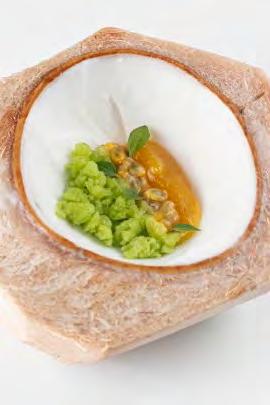
FROZEN LEMON

RAISINING




SEMI RAISINED FIG
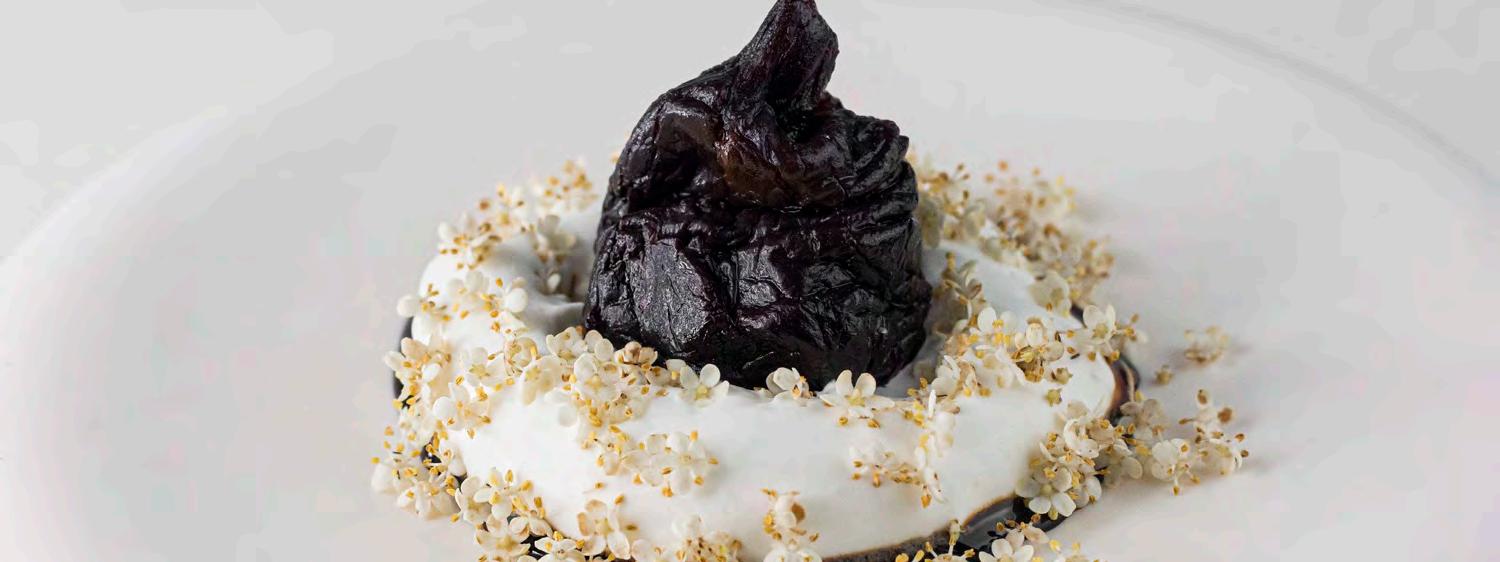
PEELING
If the enzyme acts only on theskin,thebreak in the pectin structure that occurs can beused to make iteasier to peel theproducts.






MARROW AND ALMOND

CLARIFIED


Whenthe pectin structure is broken, some fibers become soluble and separate from the rest, thus clarifying thevegetable juices.




CANDIDED


By combiningdegradation with sugar cooking,a candied fruit is madeusing less sugarandcooking it for less time.







WHAT IS CELLULOSE?
Structural polysaccharide present in the cell walls of plants, being the most abundant biomolecule, since it makes up approximately 40 or 50% of the compositionof plant cells. It is considered a dietary fiber.

Cellulose
Latin ‘cell-ul(a) - (cellǔla) means ‘littlecell’
BANANA
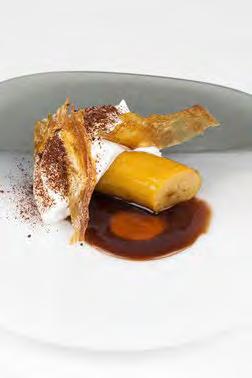


SPINACH



ARTICHOKE
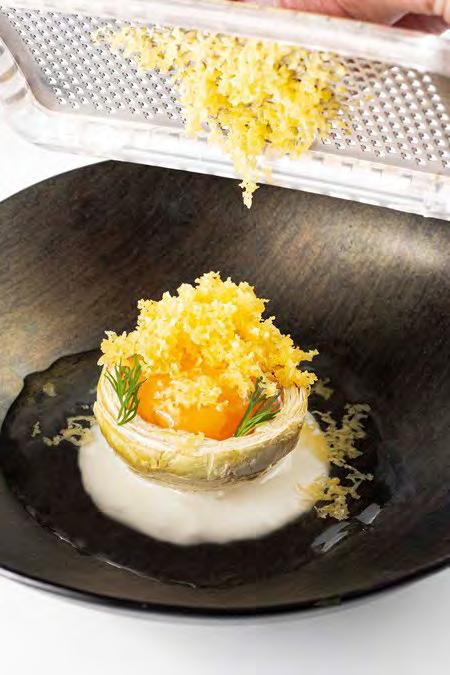


ARTICHOKE FLOWER WITH PARMESAN

PEAS WITH THEIR PODS





WHAT IS NARINGINE?

Flavonoidpresent in the peelof some citrus fruits and othervegetables, and ismainly responsible for its bittertaste. It has antioxidant andantimutagenic properties.
Narinigine
Sanskrit 'Naringa' (Nãriṅga) means 'orange'
REMOVE BITTERNESS

By breakingthe molecules thatgive a bitter taste, our perception changes and we stop feelingit.




oléculas nuest tirlo
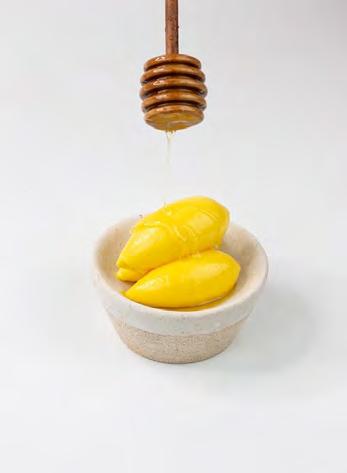
FLAVOR ENHANCER



LEMON ALBEDO WITH CUSTARD APPLE
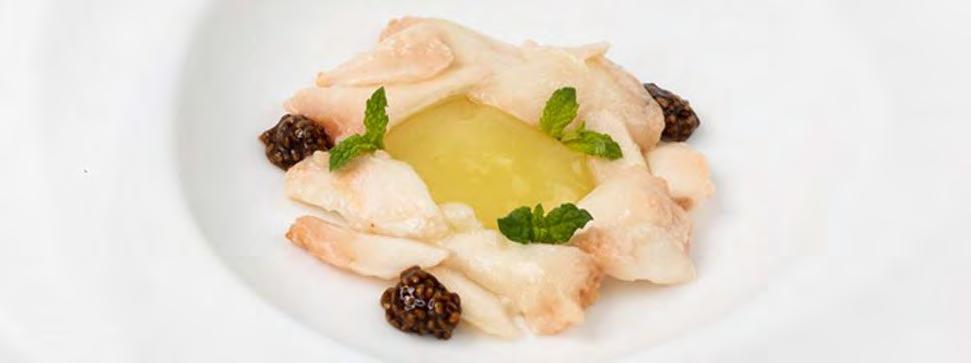
ORANGE PÂTE A FRUIT




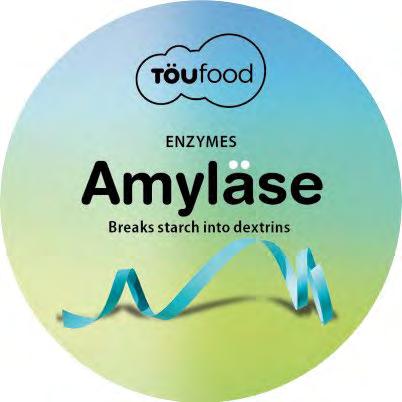
WHAT IS STARCH?
Most common energy reserve polysaccharideamong vegetables. Itis made up oflong , more or less branched glucose chains,so whendegraded it will release dextrins (short glucose chains) and other saccharides.

Starch
Greek ‘a-myl(o)- (ἄμυλος)
means ‘not ground’
DEGRADATION


By degradingthe starch, the thickening and structure capacity is lost, so the products fall apart.




RICE PUDDING

LIQUATE
Whenthe starch is destroyed, the thickening power is eliminated and therefore theturbidity in smoothies and juices.



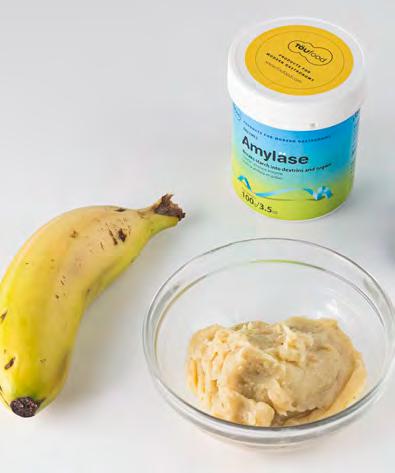
CROISSANT CORNETTO


SWEET POTAO CREAMY PANELLET

SWEETENER

Since starch is made up of glucose, when broken down by enzymes, it will be released, sweetening thefinalproduct.









WHAT ARE DEXTRINS?
Oligosaccharide producedby incomplete hydrolysis of starch. Itis made up of short glucose chains,so whendegraded itwill release glucose and some disaccharides such as maltose.


Dextrins
Latin ‘dexter - ine’ means 'substance that is to the right'
CARAMELIZATION

If free sugarsaregenerated, itiseasier for them to caramelize and obtain crispier and more goldenproducts.




POTATO ICE CREAM WITH CRISPY SKIN

POTATO MILLEFEUIL

FERMENTATION
Withtheuse of amylase andglucosidase enzymes, the fermentation rate considerably increased.





BRIOCHE





WHAT IS SUGAR?
Disaccharide made up of glucose and fructose. Itis the most usedsweetener for what is usually called simply sugar and isgenerally extracted from sugar cane, beetroot or corn. Apart from being a sweetener, it has other functions such as preservativeor structural.

Saccharose
Sanskrit ‘Sarkara’ (śarkarã) means ‘sugar ’
SWEETENER

Glucose and fructose alone, by their nature, are noticeably sweeter thanwhen they aretogether.





LIQUATE CARAMEL


When invertaseisapplied to a sugar-basedpreparation, suchas candy or fondant, itwill lose itsstructure over time.




PANELA CHOCOLATE

SUGAR INVERSION



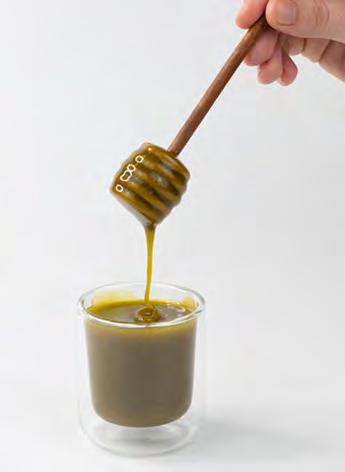
Invert sugar is the mixture of glucoseand fructose made from sucrose. With multiple properties, itis one of the most usedproducts in pastry.


PINE MARSHMALLOW

ROSE AND RASPBERRY KAKIGORI

PISTACHIO BAKLAVA





WHAT ARE LIPIDS?
Set of hydrophobic biomolecules, among the most common we find the triglycerides that we usually call fats, which can be of animal or vegetable origin. These fats provide a characteristic flavor and texture to each food. Depending on the fatty acids that make it up, its properties will vary.
Greek 'Lipos- (λίπος) means 'fat'
 Lipid
Lipid
CONTROLLED RANCIDING


By degrading fats, their aromaand flavor are modified, developing mature andrancid flavors.




PARMESAN FROZEN AIR
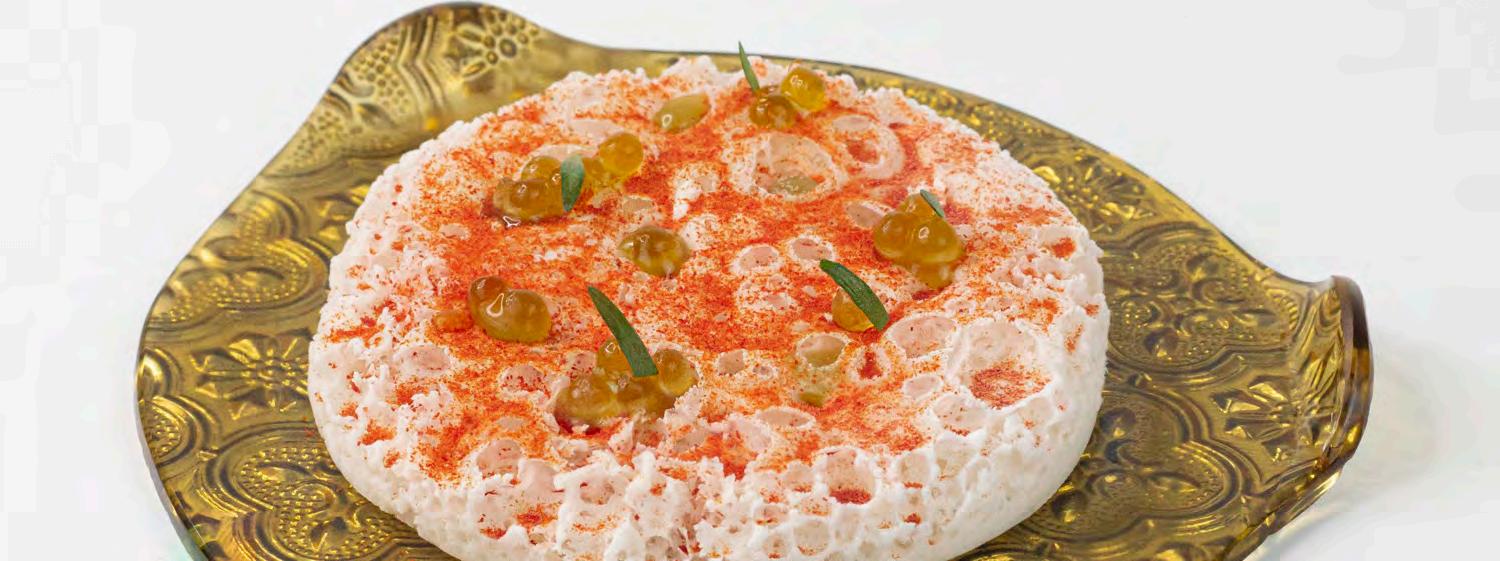
BEARNEAISE MUSSELS

FLAVOR ENHANCER


By modifyingthearomatic profiles of the ingredients, deeper flavors are developed thatenhancethe flavor of the brew.



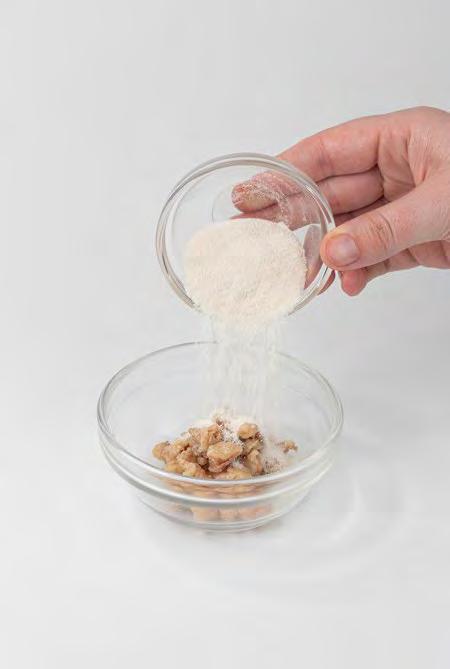
BUTTER FOAM TARTAR

DOUGH IMPROVEMENT


By breaking down the fats found in the different masses, the emulsionis improved and more unitedand softer masses aregenerated.




CHEESE MOCHI



STARCHES AND FIBERS
Starches are huge moleculesmadeup of glucose, in which two different polymers are differentiated, amylose (with a linear structure, approximately 20-30%)and amylopectin (with a branched structure, approximately 70-80%). Being very large molecules, they have practically no taste or aroma. Starches,whenhydrated, absorb a large amount of water, addingthickness to the preparation.

We classify fibers with starches, not by theirmolecularstructurebutby theirproperties,generally thickening.

STARCHES AND FIBERS

Sauces Creams Fried
• Bind sauces and thicken them.

• It is necessary to boil it (not recommended with ingredients that oxidize)
• Creams and creams with different consistencies.
• They can allow certain processes (freezing, acidity, etc..)
• They improve the crunchiness in fried foods, batters or tempuras.
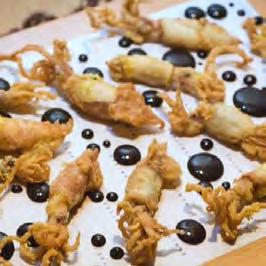
• They retain less oil.
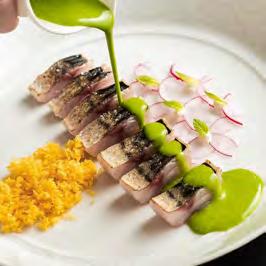
STARCHES AND FIBERS






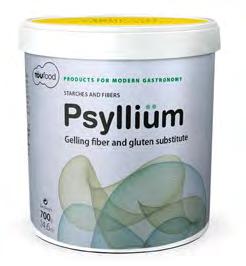

Sauces Creams Frying foods Chunch Freezable Cold preparation Cornsöl ● Trisöl ● Psylliüm ● ● ● ● Küzu ● ● ● Cornstär ● ● ● Starcrëm ● ● ● ● ● Ultratëx ● ● ● ● ● APPLICATIONS
OTHER FIBERS





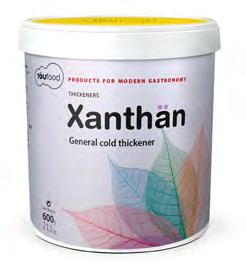





PROTEINS
Proteins are macromolecules (very large molecules),whichdue to their composition and shape have very important functions in the ingredients that contain them.
Vegetable proteins providepreparations withthe necessaryproperties that are usuallyobtained from traditional ingredients such as eggs, milk or animal gelatin.
Vegetables
Animals Fishgël Albümin
Potäto BAKE Protein
Proteins Gelling
Egg Vegetables
Albümin
Caseinäte
Emulsifiers Animals
Egg
Potäto WHIP Protein Pëa
Söy
Chickpëa
Protein
Protein
Protein
VEGETABLE PROTEINS
Proteins are molecules that fulfill some of these technical functions.

• Gelation


• Emulsification

• Foaming
• Cogaulation
• Stabilization
Meringues

VEGETABLE PROTEINS
Mousses

Doughs
• Substitute the egg protein to assemble meringues.
• They can be dried, burned or used as a base for other preparations.
• Provides an airy texture in mousses.
• Depending on the protein, the texture changes.

• Provides aeration in whipped doughs.
• In fatty doughs it gives crunchiness.

VEGETABLE PROTEINS
Cremeaux Ganaches

• They give the necessary stability to keep it creamy.


• Emulsify the chocolate with the base.
• They give airy and light texture.
VEGETABLE PROTEINS







Meringues Mousses Doughs Cremeaux Ganaches Ice creams Foams Sauces Potäto Bake ● ● ● Potäto Whip ● ● ● ● ● ● Pëa ● ● ● ● ● Söy ● ● ● ● ● ● Chickpëa ● ● ● Rïce ● ● APPLICATIONS
Productos for modern gastronomy











































































































































 Lipid
Lipid

















































